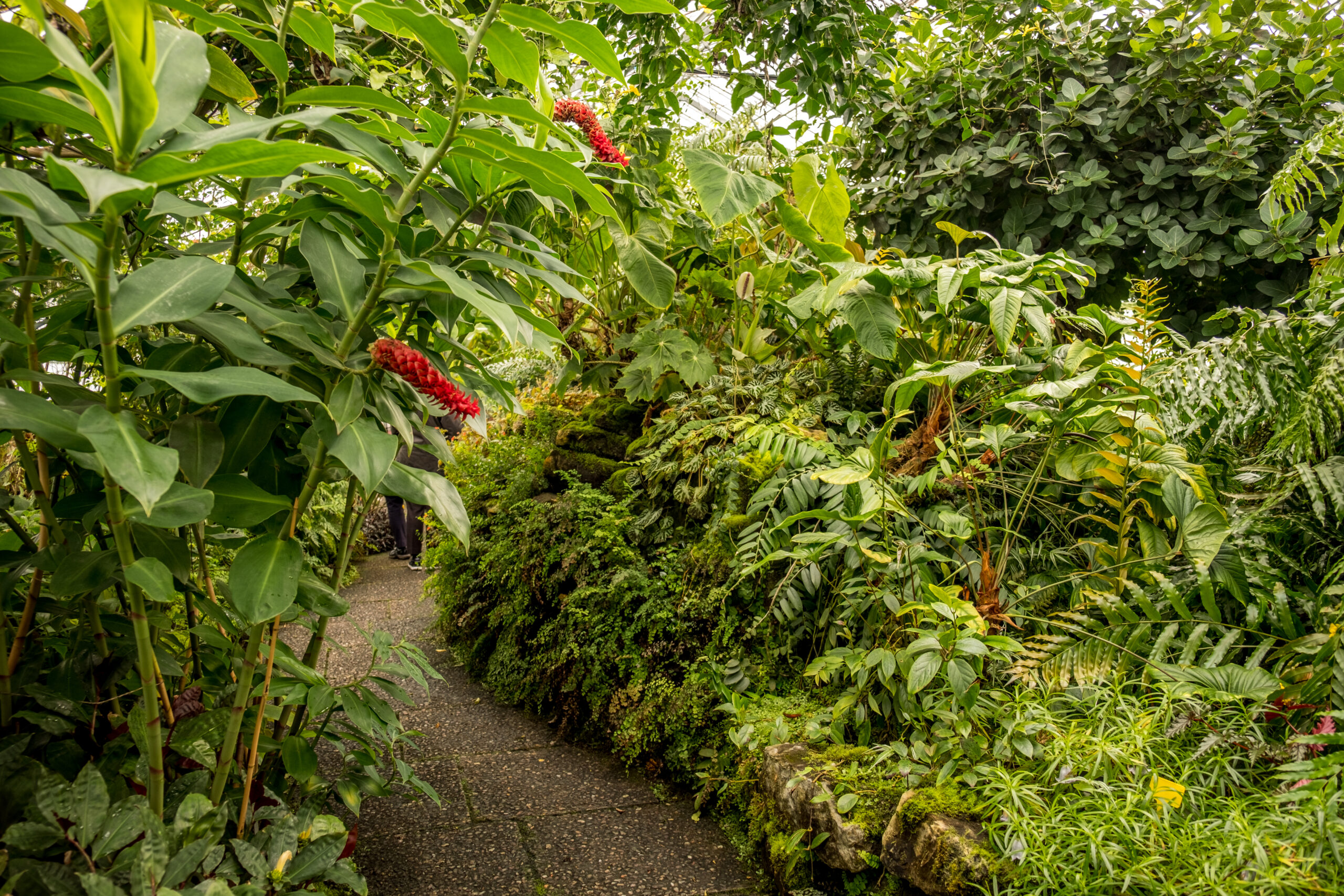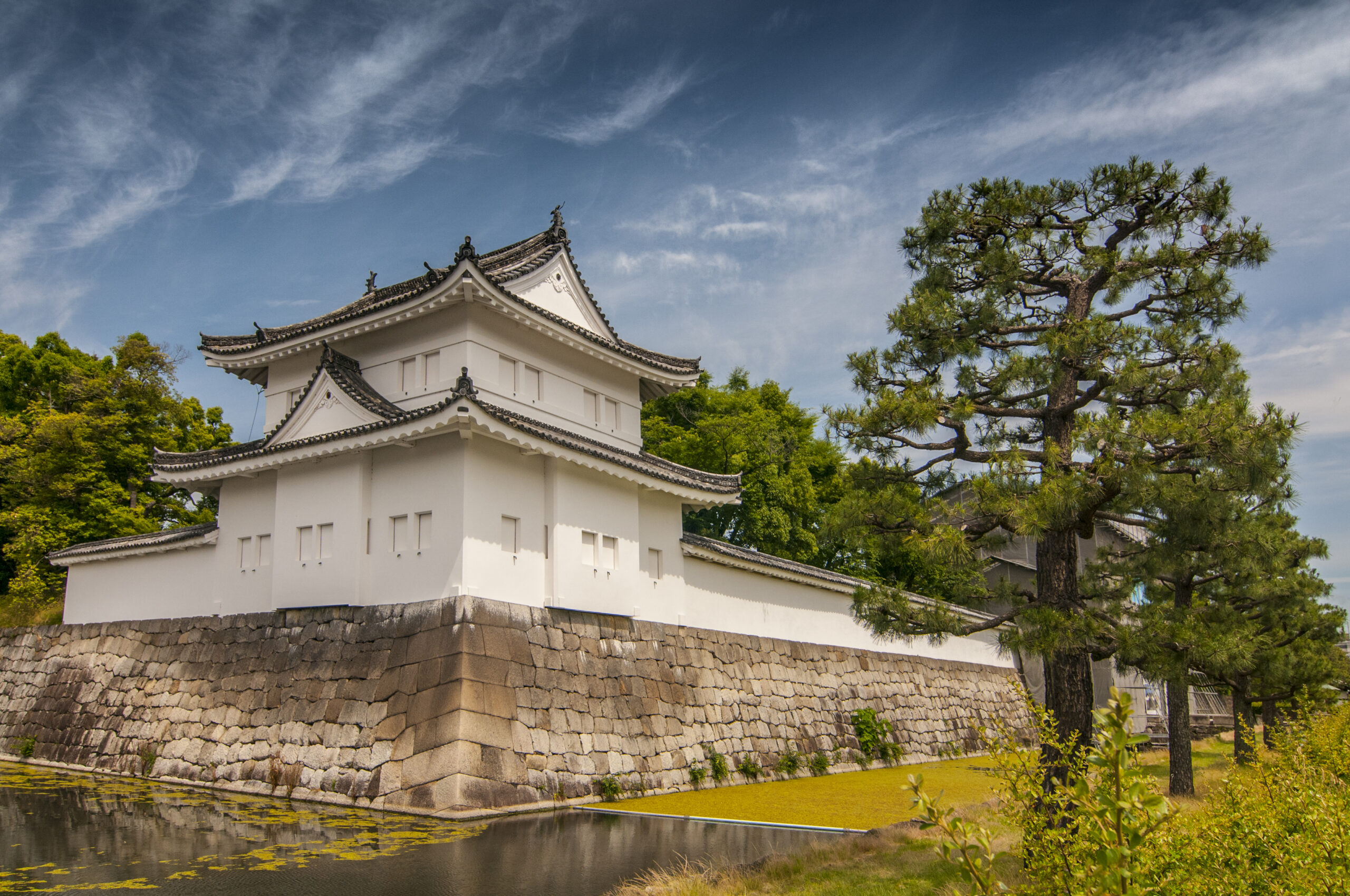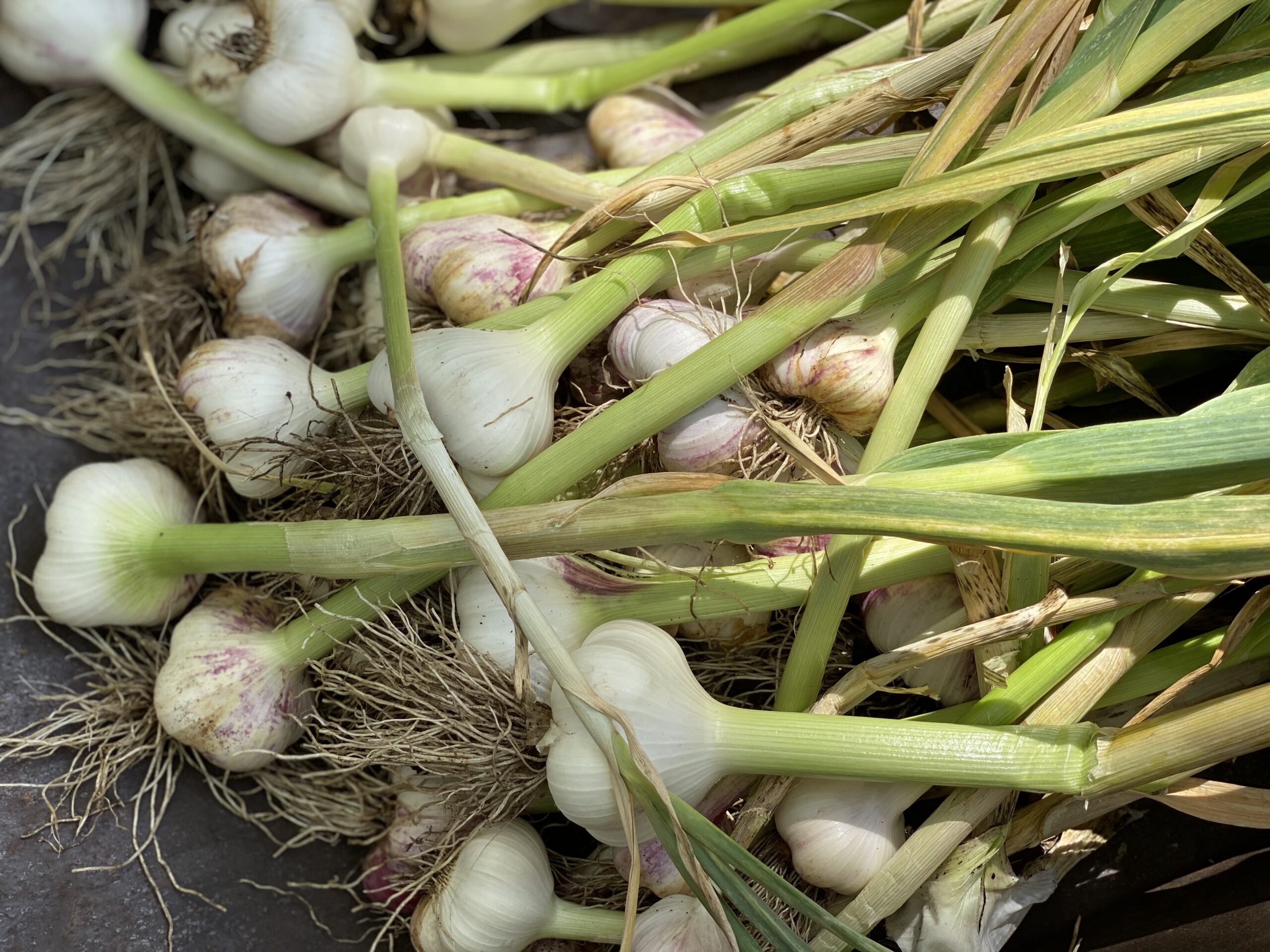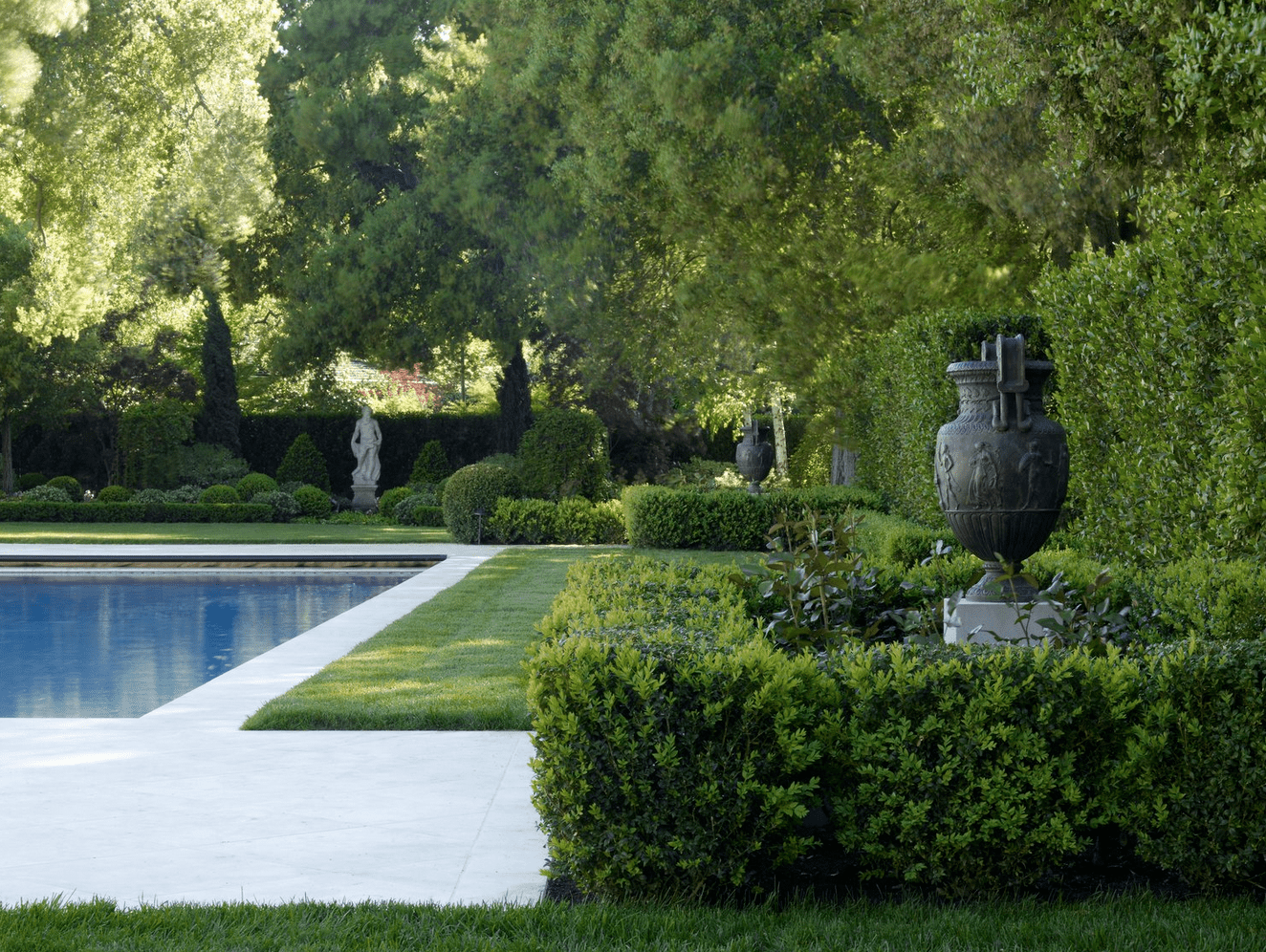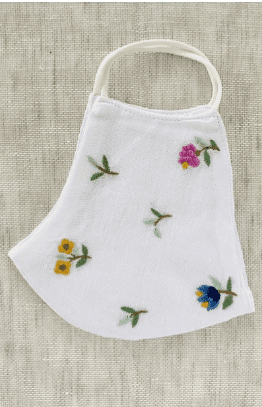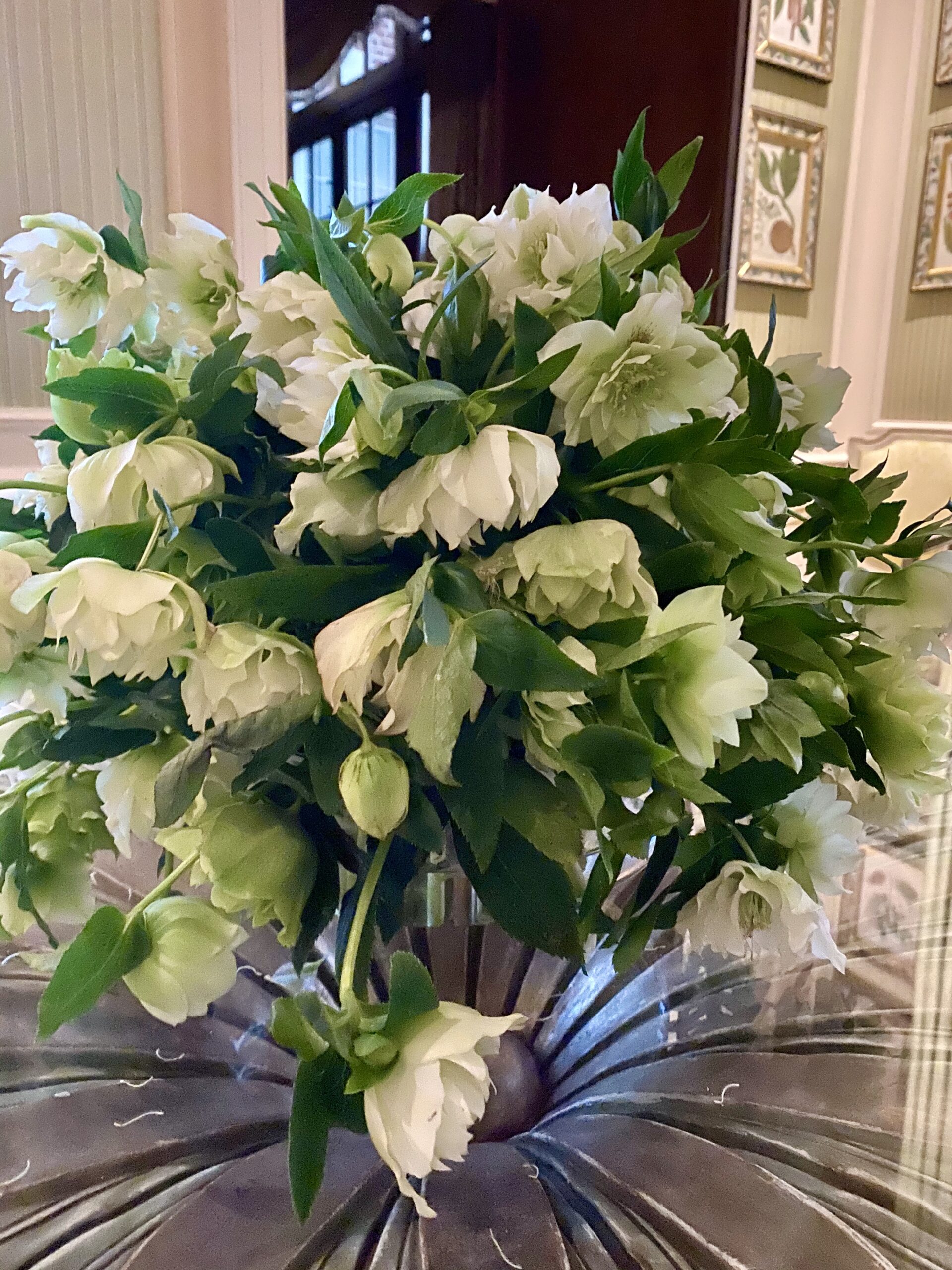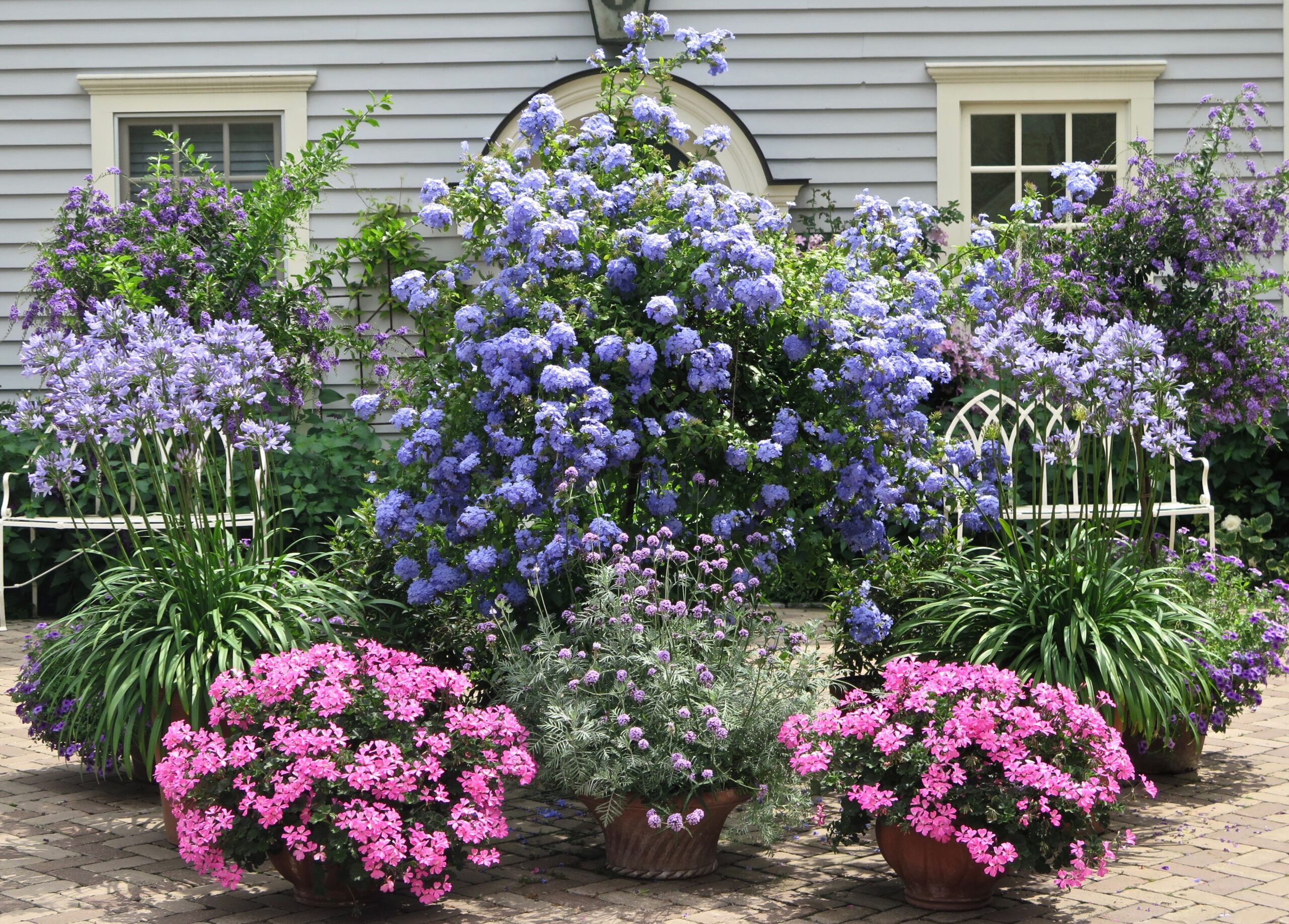The grand finale of our garden tour in Scotland was the Royal Botanic Gardens in Edinburgh, which was established in 1670. They expanded their gardens to include Benmore in Argyll in 1929, Dawyck in the wooded hills of the Scottish Borders in 1969 and Logan on the southern penninsula of Dumfries & Galloway in 1978 (for those who know their Scottish geography).
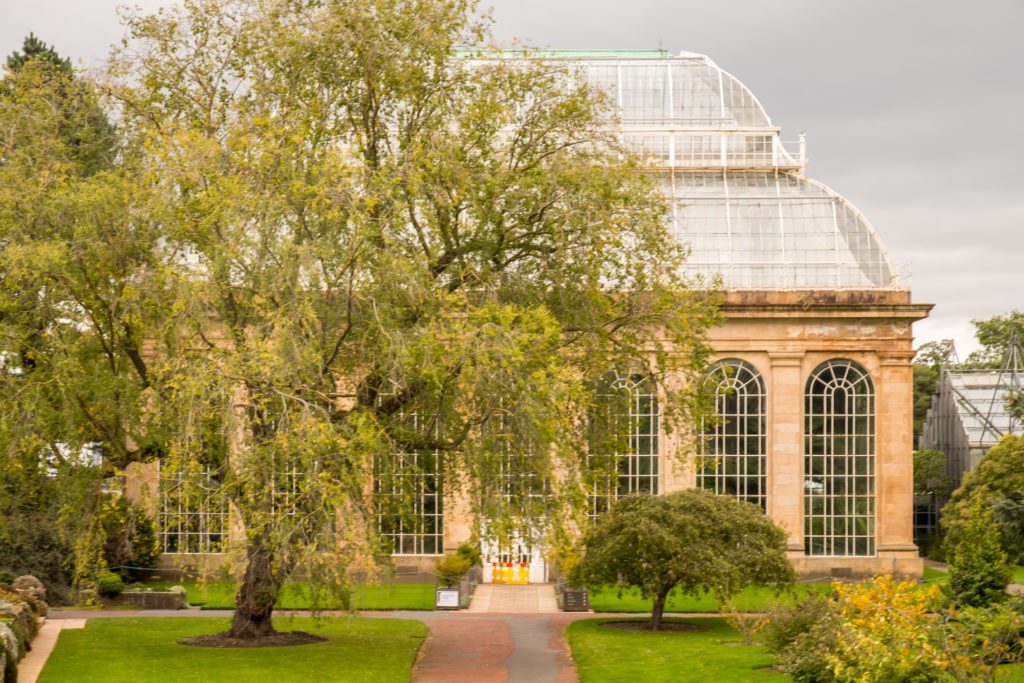

Their mission is to “explore, conserve and explain the world of plants for a better future”. They strive to drive home the message that without plant life there can be no human life.
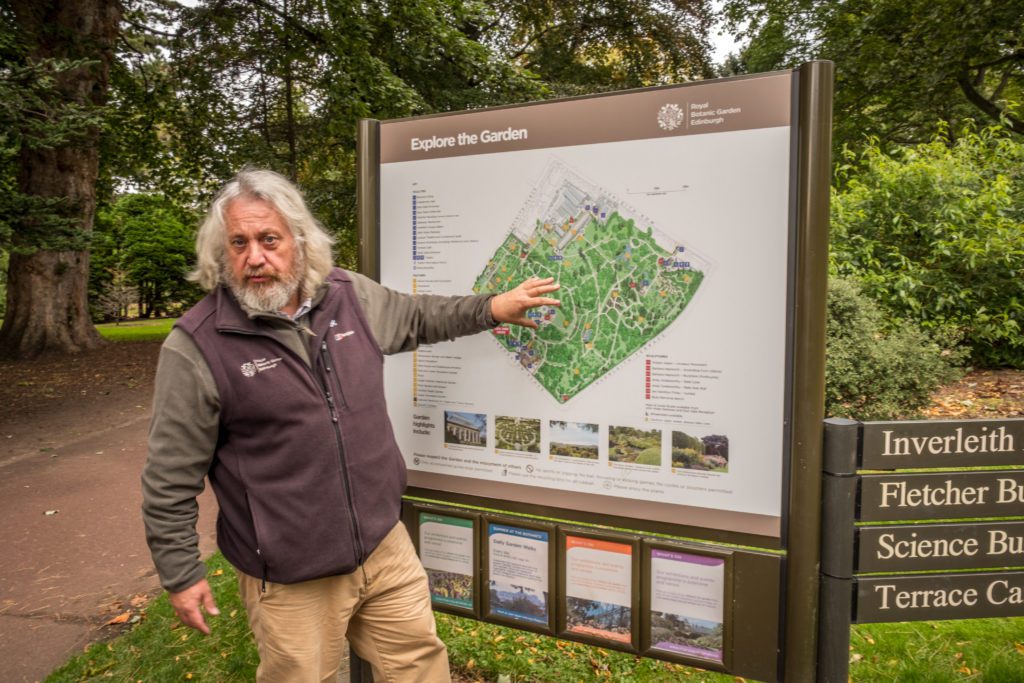

We were fortunate to have a tour of the Edinburgh gardens by Head Curator David Knott. We couldn’t have been in better hands. David is an incredibly knowledgeable and passionate horticulturist, with a wonderful Scottish sense of humor. He and his team are clearly very dedicated to their work of collecting, cultivating and preserving plant material.
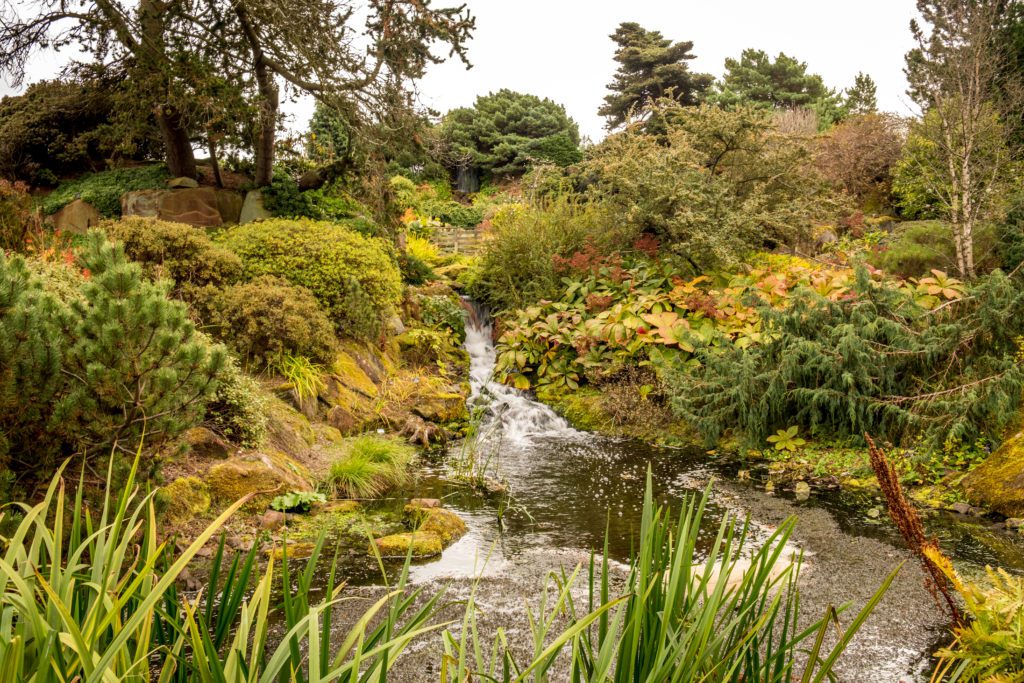

What the Royal Botanic Garden is renowned for is their incredible living collection, which consists of more than 13,302 plant species, and their herbarium which contains in excess of 3 million preserved specimens. They are committed to saving plants in environmentally or politically endangered areas, such as parts of Asia and the Amazon Rainforest.
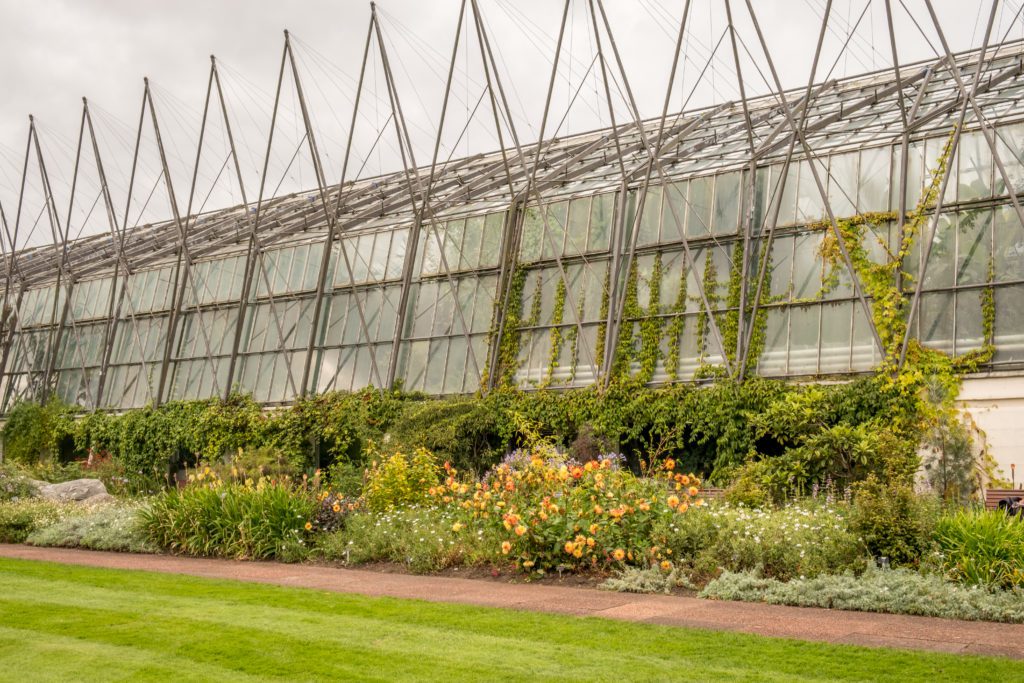

I had been told that the glasshouses were a “must-see” and they were! I could have spent an entire afternoon looking through the glasshouses that housed thousands of plants in a greenhouse-humidified environment, including one that contained only varieties of the African Violet. Who knew there were so many?
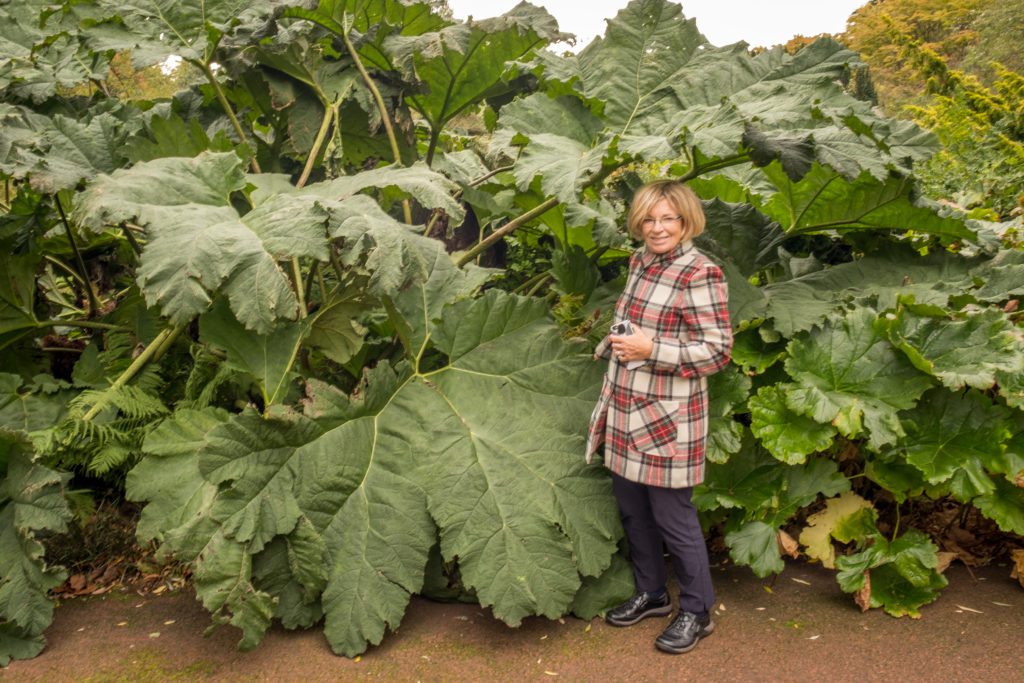

There were several really unusual plants throughout the gardens that we’d never heard of, like this large-leafed Gunnera manicata from South America which was much taller than Tuny.
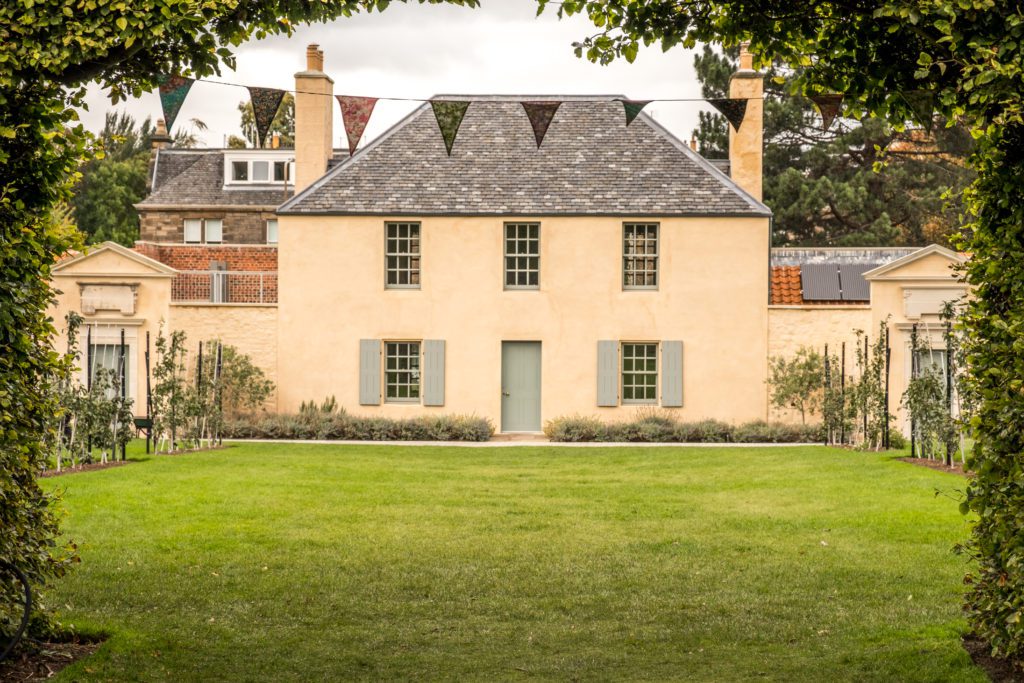

Education is a large part of the RBG’s mission and they run classes in this building to educate young and old alike. There is a wonderful vegetable garden in front of this building that was being tended by a group of volunteers as we walked towards the building. If I lived closeby, I’d be volunteering for that job!
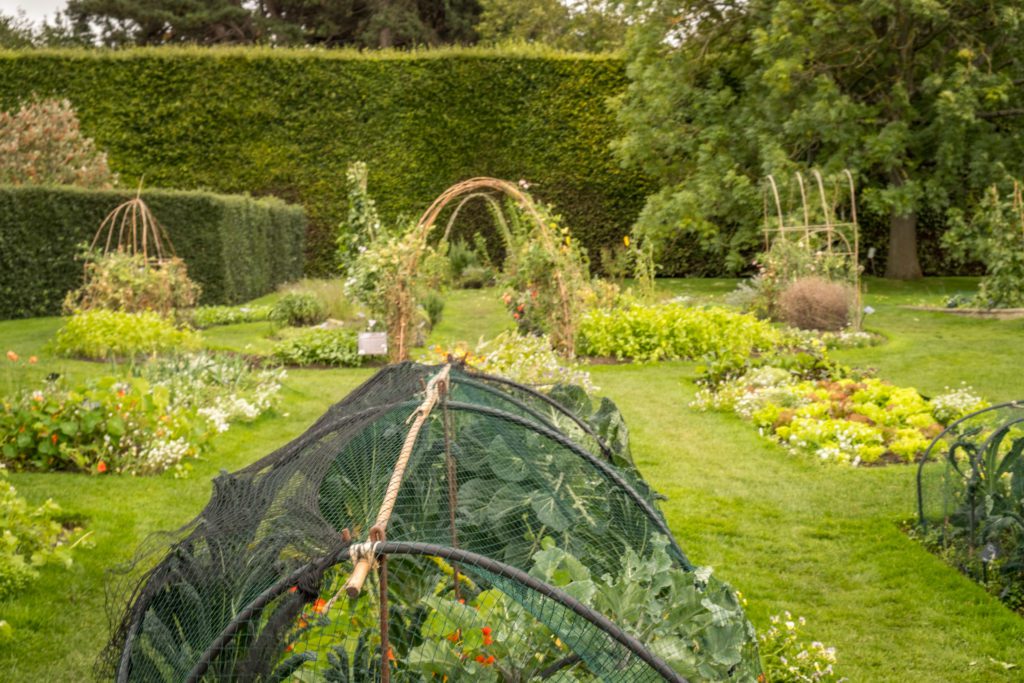

One of their annual “events” is having locals bring in the apples from their trees to identify their varieties. David said that lots of apples are grown in Scotland and many people have no idea what kind of apples they’re growing, so the RBG can help identify them. The education building had a u-shaped table containing samples of several different types of apples with their identified names and brief information. I’ve never heard of most of these apples!
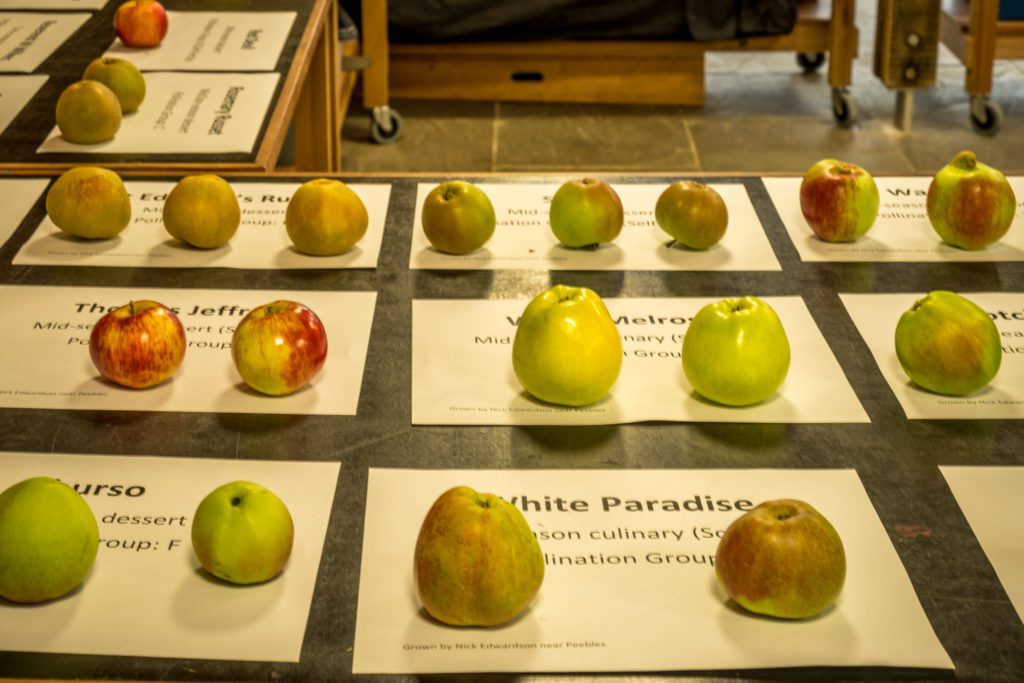

We walked through a building containing a “crevice garden” containing a rock wall with a large variety of plant material growing in the crevices.
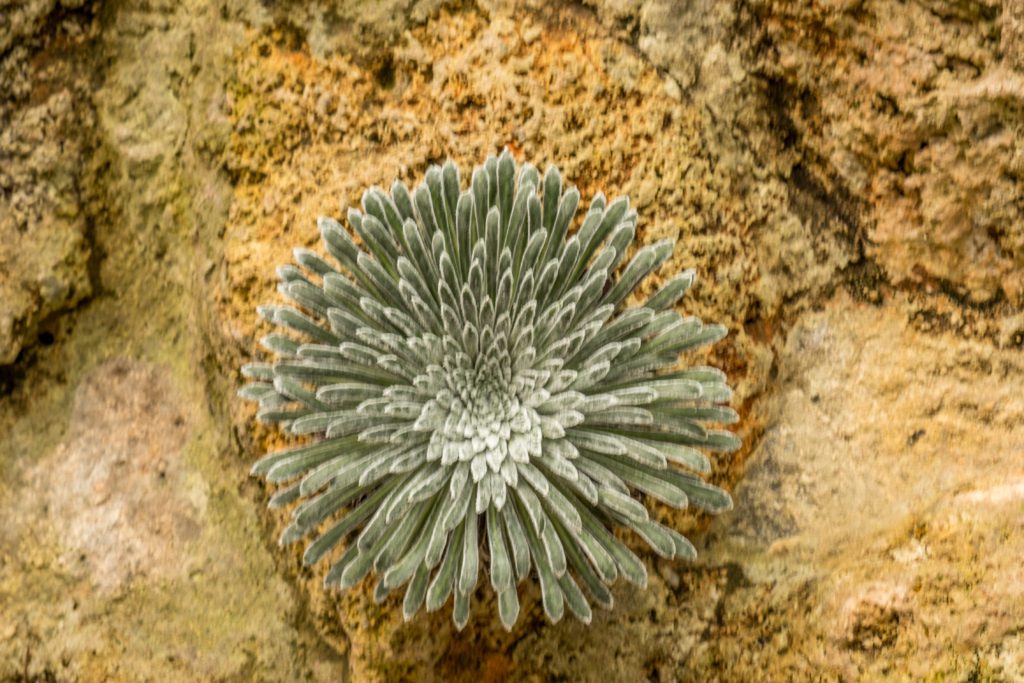

Even though we were in the early October days, there was still color and interest in their gardens. I loved seeing the benches along the pathways. You can imagine visitors enjoying these perfectly positioned seats in the late spring and early summer months when these beds must be in full bloom.
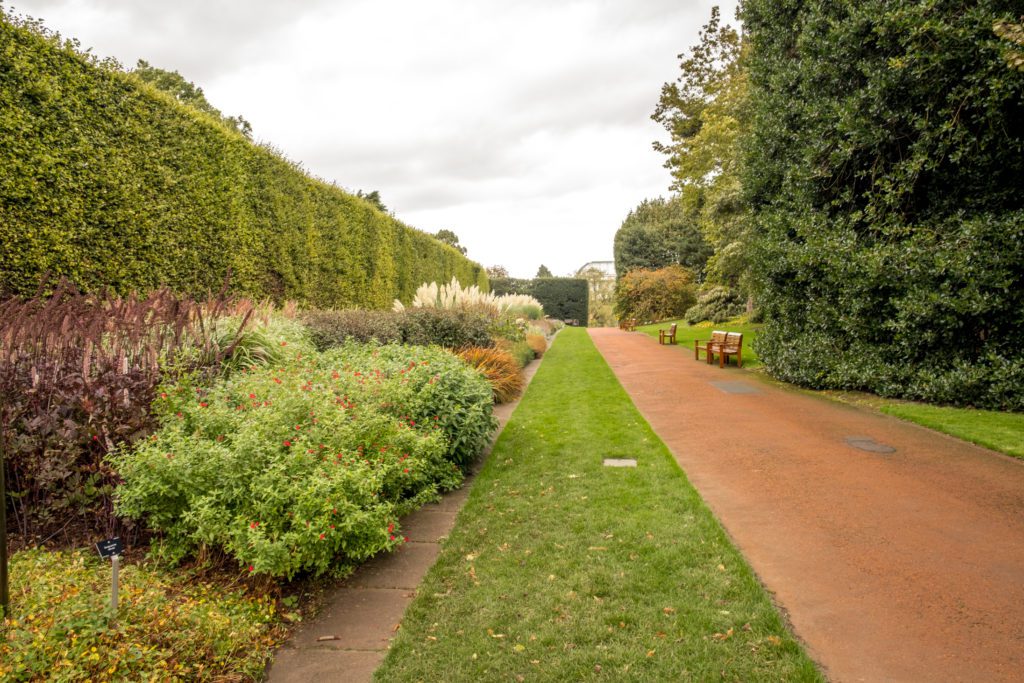

There wasn’t nearly enough time to enjoy and learn about all of the trees they have on property. This particular tree caught my eye because of its incredible trunk. Clearly I’ll need to focus on the trees during my next visit.
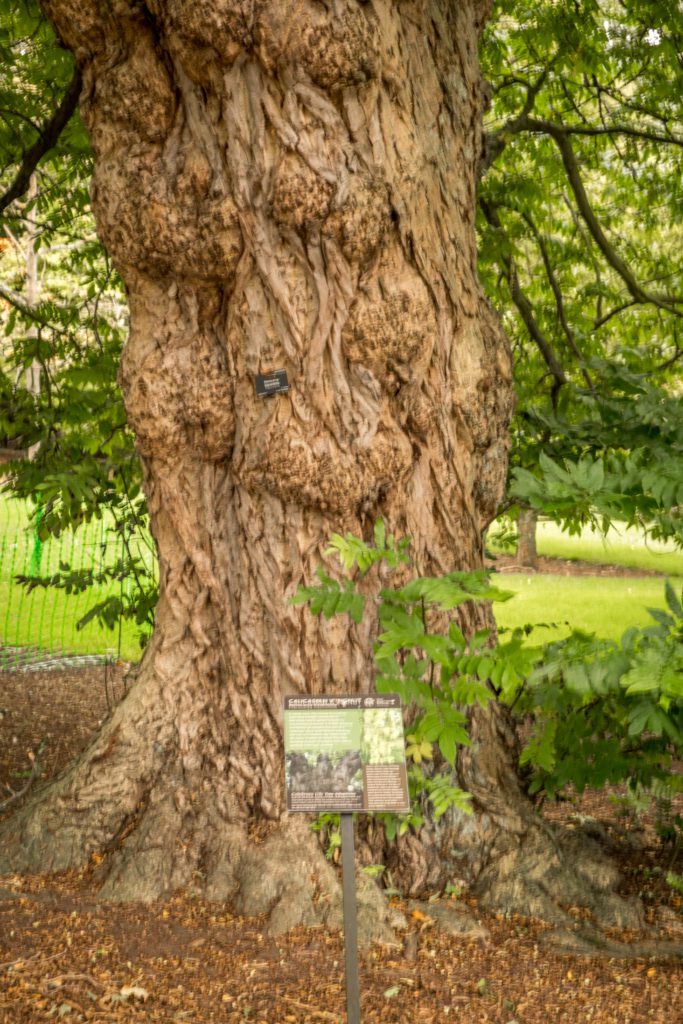

Botanical gardens such as the Royal Botanic Garden in Edinburgh and Kew Gardens in London are doing such important work for our planet. Good to keep these places in mind as you support various places and causes because they can always use a little help.
Thank you for a wonderful introduction to the Royal Botanic Garden in Edinburgh, David! I hope to meet again.

